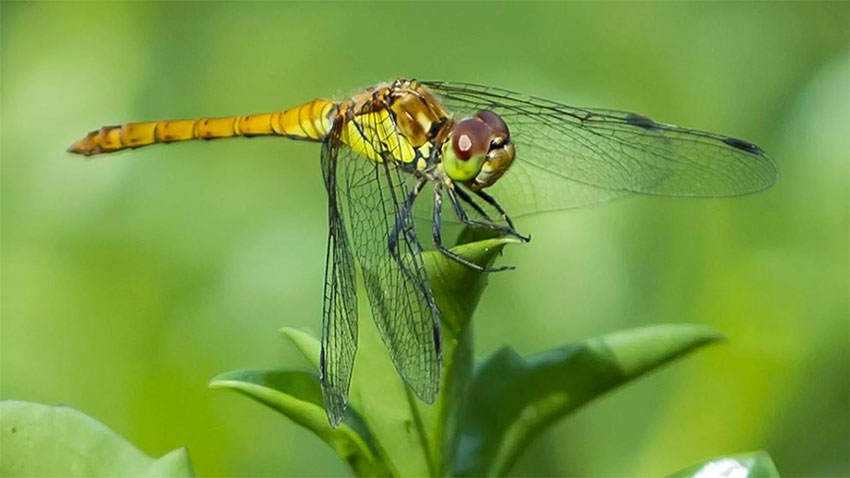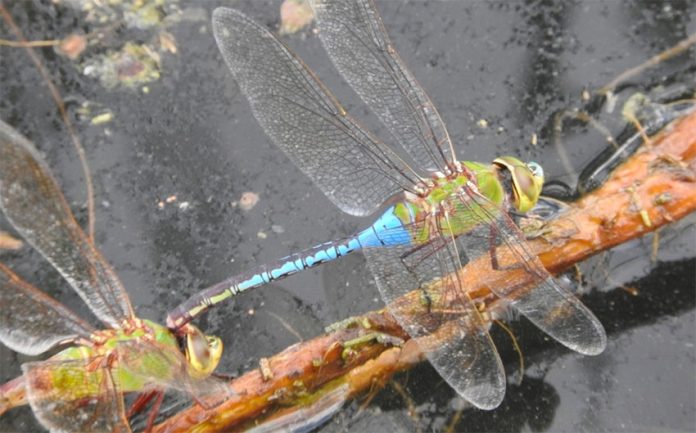The 4,000-kilometer migration of the monarch butterfly from Canada and the United States to the forests of Michoacán and México state is well known.
But there is another insect that undertakes an equally impressive annual journey: the dragonfly also migrates, and some do so for even greater distances than the butterflies.
Dragonflies, which can fly at speeds of up to 97 kilometers an hour, are capable of crossing the ocean and can travel as far as 14,000 kilometers without rest, says dragonfly expert Enrique González Soriano, a researcher at the National Autonomous University (UNAM) Institute of Biology.
The Pantala flavescens species “makes tremendously large migrations, the most extensive for any insect, as they are capable of crossing the Indian Ocean, flying from India to the northeast coast of Africa,” said González, who has studied the insect for 30 years.
Although the dragonfly migration is not as well studied as the monarch’s, 11 species of dragonflies migrate in North America, six of which include Mexico in their path.

Dragonflies migrate at the end of summer or beginning of fall, following the coasts of the Gulf of Mexico or the Pacific Ocean. Less is known about the migratory phenomenon in the Pacific where there may be more species that arrive in Mexican territory, González says. Dragonflies are too small to track and do not travel in swarms, as monarchs do.
Biologist Carlos Velasco, president of Nuevo León’s Biodiversity Commission, pointed out that at least two species of dragonflies have been reported flying over Monterrey recently: the yellow striped dragonfly (Pantala flavescens) mentioned above, as well as the green darner, whose scientific name is Anax junius.
The green darner emerges from ponds and lakes in Mexico in the spring to journey 700 kilometers north to the southern and central portions of the United States where it will lay its eggs and die. The second generation will reach maturity and head south in the fall to return to Mexico.
“Dragonflies are predatory insects in the water in their larval stage and outside it, as adults. They feed on other insects, but they can also feed on fish fry, some types of mollusks, and outside the water they are also predators and feed on wasps, flies and mosquitoes,” González explains, adding that they can also feed on the larva of insects harmful to humans, such as mosquitoes that can transmit dengue or malaria.
Velasco says that dragonflies can also act as indicators of the health of the bodies of water or ecosystems where they develop.
“Unlike the monarch butterfly, dragonflies need another type of habitat, not like the oyamel forests we have in central Mexico. For dragonflies, it is extremely important that there are wetlands, that is, bodies of water, rivers, streams, where they can lay the eggs of the next generation of dragonflies, that is why the conservation and knowledge of these species is of great importance to all of us,” Velasco says.
He recommends that people consider becoming citizen scientists by recording their observations of dragonflies and other flora and fauna on platforms such as Naturalista, part of the iNaturalist.org network.
The website is a joint project of the California Academy of Sciences and National Geographic in which more than one million people are participants in an online social network of people sharing biodiversity information to help each other learn about nature.
Source: Milenio (sp)
